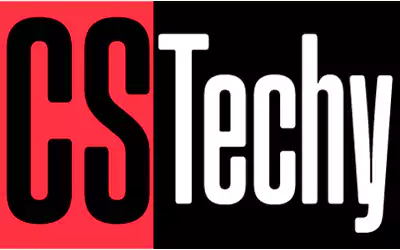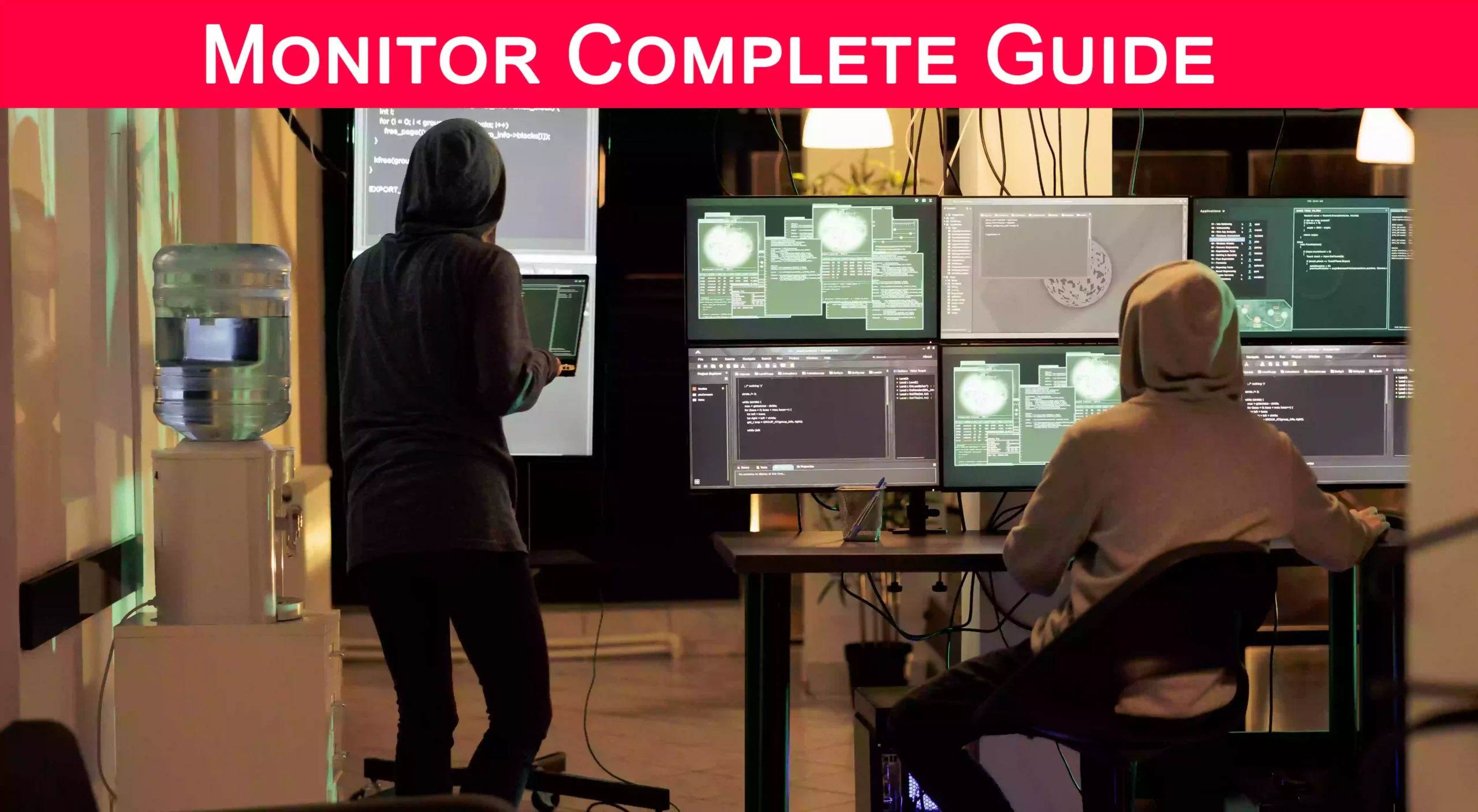Monitor Buying Guide – How to Choose the Right One

Choosing a monitor doesn’t have to be confusing. Whether you’re gaming, working, studying, or watching videos, the right monitor can improve your entire experience. This guide breaks down everything you need to know — in simple terms — so you can find the perfect monitor for your needs.
1. Key Factors to Consider Before Monitor Buying Guide
Here are the basics you should always check:
- Screen Size & Resolution
Pick a size that fits your desk. Higher resolution = sharper picture. - Refresh Rate & Response Time
Gamers and creatives should look for smoother visuals (144Hz+, 1ms). - Connectivity Options
Make sure it has HDMI, DisplayPort, or USB-C for your devices. - Adjustability & Ergonomics
A monitor with height/tilt adjustment is better for posture and comfort.
2. Monitor Buying Guide–Budget Monitors
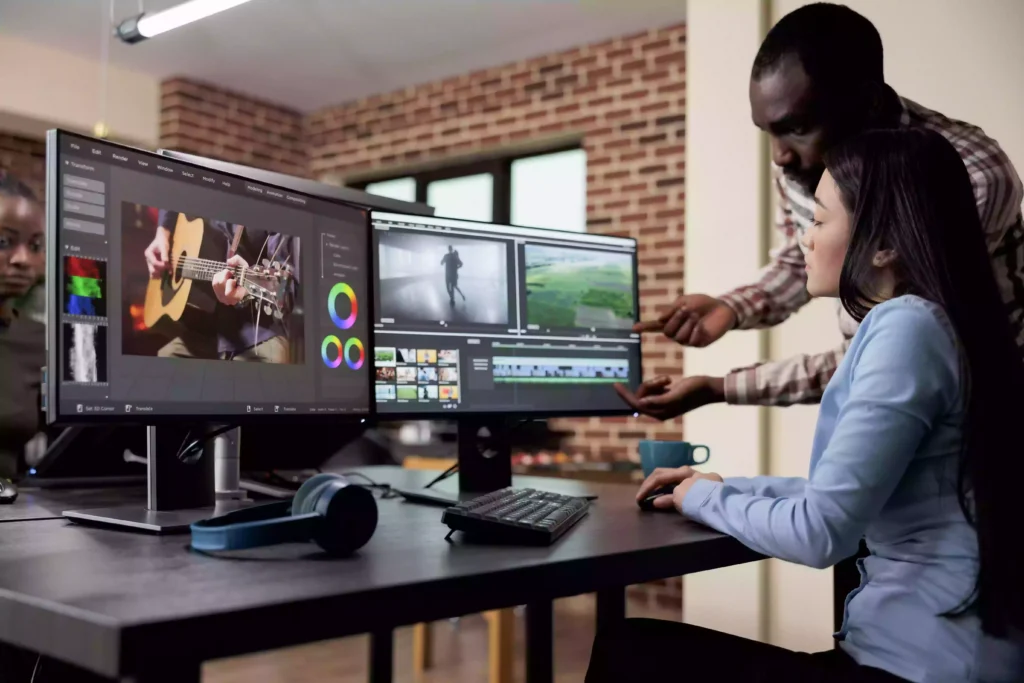
You don’t need to spend a lot to get a good monitor.
- Everyday Use: 24-inch Full HD, IPS display.
- For Students: Compact monitors with eye-care features.
- Office Work: 27-inch, flicker-free screen.
✅ What to Look for in a Budget Monitor:
- Full HD resolution (1920×1080)
- IPS/VA panel for color accuracy
- Tilt/height adjustment if possible
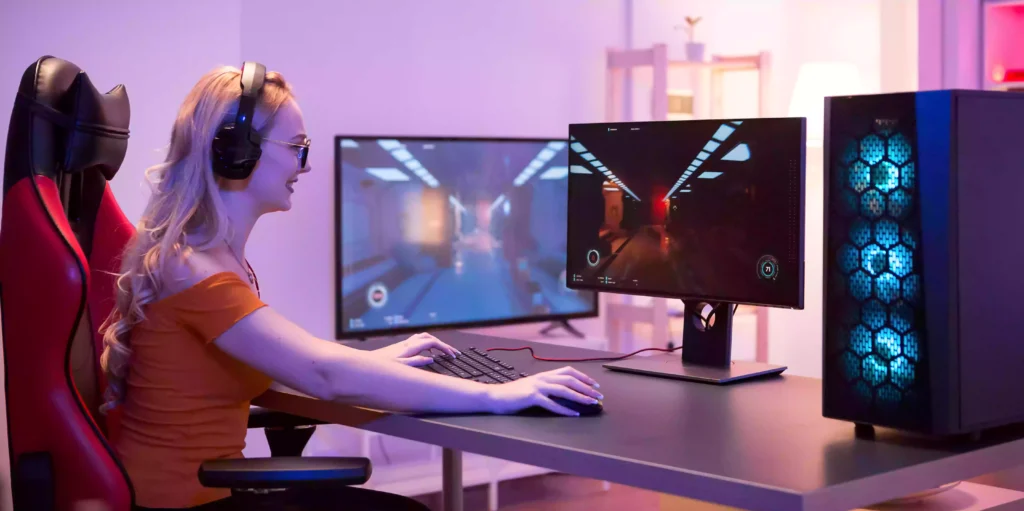
3. Monitor Buying Guide–Gaming Monitors: What Matters Most?
If you’re into gaming, focus on these features:
- High Refresh Rate: 144Hz or higher = smoother movement
- Low Response Time: 1ms is ideal for fast reactions
- Adaptive Sync: G-Sync or FreeSync stops screen tearing
- HDR Support: Better brightness and color in games
🔥 Best Gaming Monitor Types:
- Budget: 144Hz, 1ms, FreeSync
- Mid-range: 1440p, 165Hz, IPS, G-Sync
- High-end: 4K, 120Hz+, HDMI 2.1, HDR
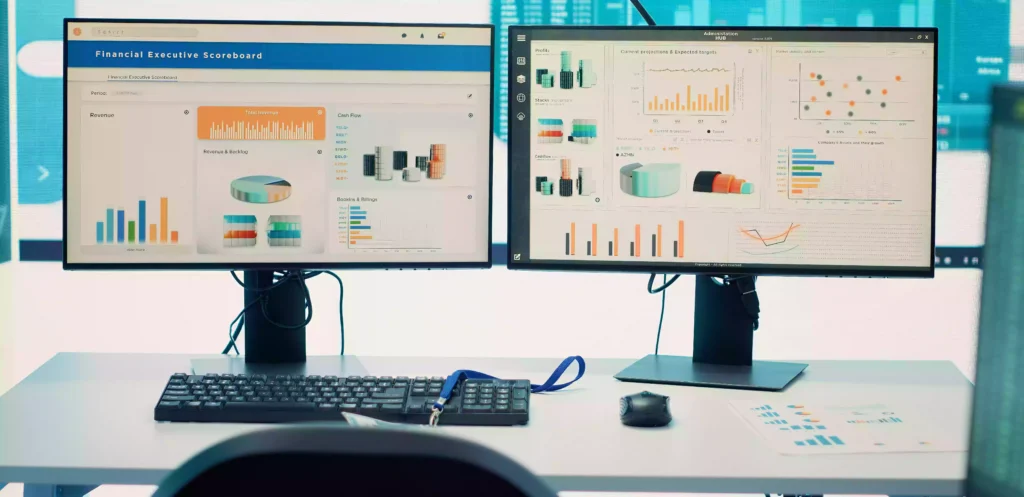
4. Monitor Buying Guide–Work & Productivity Monitors: Improve Your Efficiency
For work tasks, choose a monitor that helps you multitask and stay comfortable.
💼 Best Features for Productivity:
- 4K or Ultrawide for more space
- USB-C for charging and easy connection
- Ergonomic stand for posture
💼 Top Picks:
- Professionals: 32″ 4K, USB-C, color-accurate
- Designers: 34″ ultrawide, 100% sRGB
- Office: 27″ QHD with eye-care tech
5. UltraWide vs. Dual Monitor Setup: Which is Better?

Both setups boost productivity — choose what suits your style.
- Ultrawide Pros: Seamless display, less clutter
- Dual Monitor Pros: Flexible positioning, easy multitasking
✔️ Great for research, editing, multitasking
✅ Choose adjustable stands for both options
6. Best Monitor Sizes for Different Users

📏 Pick the Right Size for Your Use:
- Office Work: 27″ QHD
- Professional Work: 32″ 4K
- Designers: 34″ Ultrawide
- Gaming: 27″ or 32″ (1080p, 1440p, or 4K)
- Multitasking: Dual 24″-27″ or one 34″ ultrawide

7. High Refresh Rate Monitors Explained
Higher refresh rate = smoother motion (great for gaming and fast work).
⚡ Top High Refresh Monitors:
- Best 60Hz Monitor: Standard Use Monitors – Basic refresh rate, great for browsing & office tasks.
- Best 75Hz Monitor: Entry-Level Upgrade – Smoother than 60Hz, good for casual gaming & work.
- Best 120Hz Monitor: Balanced Monitors – Great for console gaming, better motion clarity.
- Best 144Hz Monitor: High Refresh Rate Monitors – IPS panel, G-Sync, ideal for AAA gaming.
- Best 165Hz Monitor: Smooth Gaming Monitors – IPS/VA panel, Adaptive Sync, good value.
- Best 240Hz Monitor: High Refresh Rate Monitors – Fast response time, FreeSync, esports ready.
- Best 300Hz Monitor: Ultra-Fast Monitors – TN/IPS panel, ultra-low input lag.
- Best 360Hz Monitor: Esports Grade Monitors – Reflex-ready, G-Sync/FreeSync, ultra-responsive.
- Best 480Hz Monitor: Elite Gaming Monitors – OLED/IPS panel, blur reduction tech.
- Best 540Hz Monitor: Pro-Level Gaming Monitors – 0.2ms response time, Adaptive Sync, esports focused.
- Best 750Hz Monitor: Cutting-Edge Monitors – TN panel, fastest refresh rate in 2025, max speed for elite players.
8. Panel Types: IPS, TN, and VA
Each panel type has pros and cons:
- IPS: Best colors and wide viewing angles
- TN: Fastest response, but weaker colors
- VA: Deep blacks, good contrast, slower response
9. Curved & Ultrawide Monitors
- Curved Monitors: More immersive, especially for gaming
- Ultrawide Monitors: Perfect for multitasking and editing work
✔️ Reduce eye strain and increase screen space
10. Monitor Response Time vs. Refresh Rate
- Refresh Rate (Hz): How many times the image updates per second
👉 Higher = smoother visuals - Response Time (ms): How quickly pixels change
👉 Lower = less motion blur
🎮 For gaming: 144Hz+ refresh rate + 1ms response time is ideal.

11. What’s a Good Response Time?
- 1ms–3ms: Best for gaming
- 5ms or lower: Fine for work and casual use
- Above 5ms: Avoid for fast-paced games
12. Connectivity Options
Make sure your monitor supports your devices:
- HDMI & DisplayPort: For high-quality video and sound
- USB-C: One cable for video, charging, and data
- VGA: Old tech — avoid if possible
Bonus Tips & Features to Look For
🎯 Other Useful Features:
- 4K UHD (2160p): Crystal-clear visuals
- RGB Lighting: Custom look for gamers
- USB 3.2 Ports: Fast device connection
- Security Lock: Prevent theft in public spaces

Conclusion: Find the Perfect Monitor for You
To choose the right monitor, think about how you use your computer:
- For gaming: Focus on speed (refresh rate & response time)
- For work/design: Look for space, color accuracy, and comfort
- For everyday use: A good budget Full HD monitor will do
Ready to pick one?
👉 Check out CSTechy’s expert monitor reviews and recommendations!
